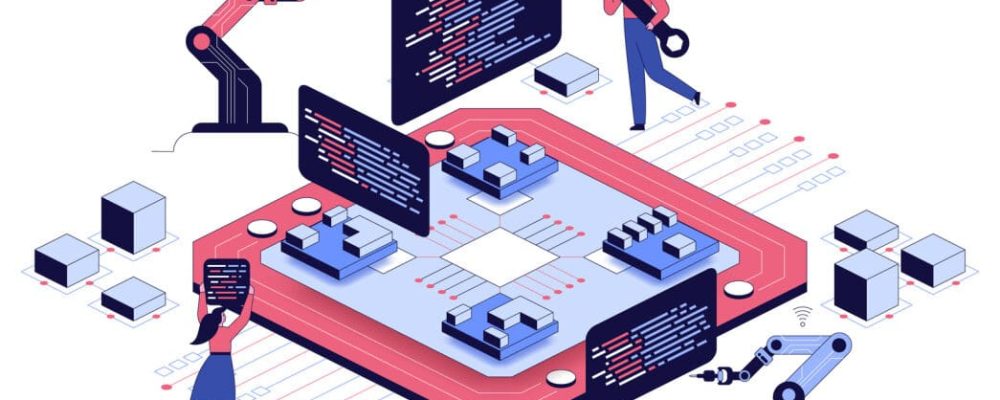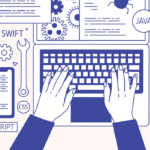Writing well-crafted content requires an effective marketing funnel — the strategic framework that maps your customer’s journey from initial interaction to eventual conversion. The marketing funnel helps you tailor your strategies to reach audiences more effectively and, ultimately, create more impactful content with a higher return.
But creating content for developers requires a distinct, tailored approach that speaks to how they think and behave while addressing their priorities and needs. Conventional audience personas may be more receptive to lighter, more sales-y pieces, but developers have a voracious appetite for precise, in-depth information. They are tech-savvy, curious, and detail-oriented, so be ready to embrace a straightforward tone that avoids fluff and marketing jargon. To successfully captivate this audience, your content must be accurate, comprehensive, and showcase real value at every funnel stage.
Read on to learn how to write for each stage of the marketing funnel and establish well-crafted marketing content that converts readers into customers.
Understanding the Marketing Funnel
There are three main stages of the marketing funnel, each requiring close attention to the needs, questions, and priorities of developers:
-
Awareness — In the awareness stage, developers have just become aware of your product, service, or solution. They’re looking for content that exposes them to tools and technologies that streamline workflows, solve problems, and improve efficiency. Therefore, content at this stage should be accessible and insightful, catching developers’ attention with new ideas that demonstrate real-world value.
-
Evaluation — In the evaluation stage, developers are actively considering your product or service and evaluating its benefits. They’re wondering, “Will this integrate with my current setup?” and “What’s the learning curve like?” Creating technical documentation and tutorials will give your developer audience insight into the product’s value proposition — and providing readers with real-world results will really show off its chops.
-
Conversion — In the conversion stage, developers are deciding whether to adopt a product or service. They are seeking extremely detailed documentation, integration guides, pricing and licensing information, and more. Because your readers are on the brink of committing, you need to reassure them that the product or service is easy to adopt — and worth it.
When it comes to marketing content, developers require a unique, no-nonsense approach. These readers aren’t perusing blogs casually — they’re looking for detailed technical content, accuracy, and relevance to guide their decision-making.
And it’s not enough to talk the talk: Because developers prioritize hands-on demonstrations, practical application, and robust documentation, mere marketing claims won’t be persuasive. You need to walk the walk by demonstrating the value, reliability, and thoroughness of all the tools your content spotlights.
Crafting Content for the Awareness Stage
The primary objective of the awareness stage is to educate and introduce developers to a new solution, tool, or methodology. In this stage, it’s vital to create informative, captivating content that strikes a balance between technical depth and approachability.
Below are some of the different types of content that resonate with developers during this funnel stage:
-
Introductory blogs — Developers appreciate clear, relevant, and accessible content, so blogs are the perfect place to start. Education is a pillar of effective software development, so creating introductory blogs that lay down foundational, complex concepts in an engaging, approachable way helps boost your credibility as a reliable source of information.
-
Short-form tutorials — Looking to spotlight a product without overwhelming your reader with information? Short-form tutorials are an excellent vehicle for providing a concise yet practical introduction to your product. These articles give your developer audience a taste of the solution — enough detail to generate intrigue and show product value, but not so much that they’re wading through an exhaustive guide that might be too intensive for a prospective user.
-
Videos and webinars — When you use videos and webinars, you can quite literally speak to developers. This personable, engaging form of content is helpful for community-building. The video medium is useful for introducing experts — whether a figurehead involved in the product’s creation or a well-known user in the community — and exploring new paradigms for development.
-
Light documentation — Light documentation can also be helpful in the awareness stage. This literature might showcase integration or ease of use, but it does so without getting too into the weeds. Developers can quickly dive in (and jump out) of these surface-level docs to address their immediate curiosities about the product’s technical capabilities. No need for an information overload!
Optimizing Content for the Evaluation Stage
You’ve piqued developer interest, and it’s time to deliver the goods. During the evaluation stage, developers evaluate your solution — perhaps comparing it with others — and seek more profound insights about what each option can offer them. So, as they read your content, developers look for credibility, depth, and real-world relevance, seeking assurance that their investment is the most worthwhile.
Below are some of the most high-impact content types to use during this funnel stage:
-
Comparison articles — Comparison articles pit tools or solutions against each other. When carefully crafted, they effectively position a product within the competitive landscape and demonstrate its value over other solutions. These pieces also take the work off developers, who no longer have to manually search for and compare options.
-
Detailed technical documentation — Technical documentation is indispensable for developers. Comprehensive walkthroughs, step-by-step implementation guides, and exhaustive reference material establish the foundation of a developer’s relationship with a solution. Beyond showcasing a product’s robustness and versatility, this documentation reinforces confidence in its functionality, ultimately driving informed decisions and effective use.
-
Case studies — This is your “proof is in the pudding” moment. Case studies that depict real-world implementations are instrumental in helping developers understand the problems that your solution can address. Whether these are documented client implementations or ultra-realistic hypothetical scenarios, case studies are extremely valuable for assisting developers in visualizing how the tool fits into their workflows.
-
Detailed guides — The evaluation stage is a great time to introduce detailed guides that walk through advanced features or provide tutorials. Creating high-level and hands-on guides that review product features in greater detail offers insights into the hot-ticket features that make this particular solution worth investing in.
Perfecting Content for the Conversion Stage
In the conversion stage, it’s time to seal the deal. At this stage, developers are on the brink of committing to a solution. They’re searching for detailed insights into the product’s features and functions, how to use them, and assurances that the product delivers what the marketing material promises.
Below are content types that are well-suited to this funnel stage:
-
Integration guides — Integration guides help simplify the onboarding process, providing developers with a comprehensive overview of how integration will look and reiterating that they have support throughout the process.
-
FAQs — Detailed FAQs preemptively address common hurdles, providing support resources created by people who understand and empathize with the issues developers encounter.
-
Reviews and testimonials — Include reviews and testimonials from trusted industry figures. These testimonials provide credibility and can inspire a developer’s confidence in the product or solution.
Next Steps
Crafting content that developers will engage with requires a uniquely detailed and tailored marketing strategy. With their taste for precision and keen technical eye, developers demand content that’s informative, accurate, and authoritative.
Compelling content that maintains optimal technical accuracy and stays developer-centric at each funnel stage drives conversion. So, whether you’re writing blog posts, detailing use cases, or developing highly technical documentation, it’s essential to share the right kind of information in the right amount at the right time.
Need some help fine-tuning your developer marketing funnel? Contact ContentLab today!





